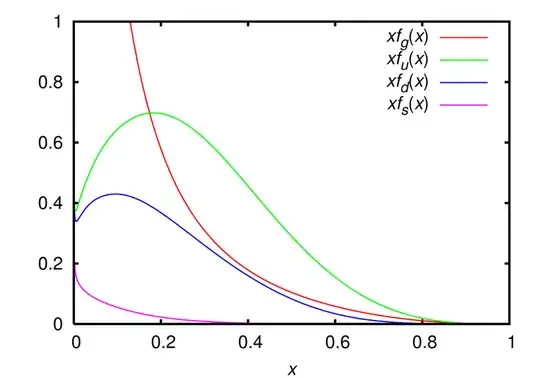I'm trying to understand the modern description of high-energy scattering processes involving hadrons in the initial states. The phenomenological parton distributions functions play a central role, and as I understand it at the moment, if we are e.g. talking about gluons, the function $G(x, Q^2)$ is the probability of finding a gluon with momentum fraction $x$ inside the hadron if the transmitted four-momentum is $Q^2$.
When these functions are plotted, I often encounter plots showing $x G(x, Q^2)$ instead of simply $G(x, Q^2)$. Why is this so? Is this just because the plots look a lot nicer if plotted this way? Or is there some deeper reason behind this that I haven't figured out yet?
As an example, take a look at the plot used on Wikipedia.

(Picture from: http://en.wikipedia.org/wiki/File:CTEQ6_parton_distribution_functions.png)